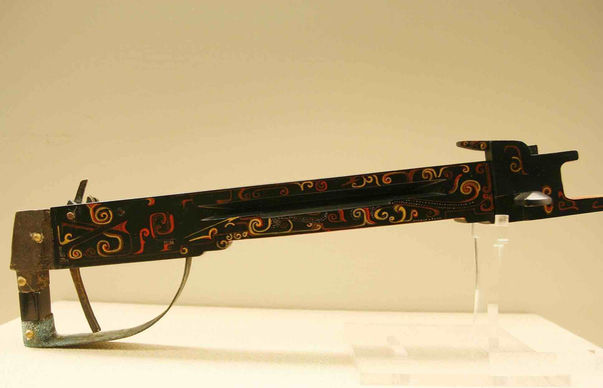Warring States Period — Wars Among Seven Kingdoms
The Warring States Period (403 BC — 221 BC) constituted the second half of the Eastern Zhou Dynasty (770 BC — 256 BC).
During this time, seven powerful kingdoms engaged in merger wars, strengthening through reforms and expansion, while the suzerain Zhou gradually diminished.
The intense contention and wars among these kingdoms fostered the flourishing of technology, literature, philosophy, reform, agriculture, politics, and the military, leaving behind a legacy of epic stories.
The seven warring states were Qi, Chu, Yan, Han, Zhao, Wei, and Qin.
Ultimately, the State of Qin emerged victorious; Qin Shi Huang defeated the other kingdoms and established the unified Qin Dynasty (221 BC — 207 BC).

Emperor Qin Shi Huang's Certificate (Hu Fu) to Deploy Forces Garrisoned in Yangling — National Museum of China
Brief History of the Rise and Fall of the Warring States Period
Political Structure and Social Systems

Ritual Jade (Yu Bi) of State Lu During the Warring States Period — Shandong Museum (Photo by Dongmaiying)
Warring States Period Facts
-
The seven great kingdoms in this period, Qi, Chu, Yan, Han, Zhao, Wei, and Qin, all had their languages, characters, currencies, etc.

Seven Kingdoms and their Different Scripts for "Horse" and "Peace"
-
The former feudal lords all announced themselves as kings during this period.
-
Many kingdoms implemented significant reforms to improve their strength and win over others.
-
The most successful reform was implemented in the State of Qin by Great Strategist Shang Yang.
-
Civilians could get noble titles based on their military achievements.

Unearthed Bronze Carriage of the Warring States — Nanjing Museum
-
Wars of this era were aimed at perishing other countries and were full of death and conspiracies.
-
Wars in this period usually lasted for months or years, in which tens of thousands of people were involved.
-
The earliest versions of the Great Wall of China were built during this era as important military defense systems.
-
About two million people lost their lives because of war during this era, and General Bai Qi of the State Qin was responsible for one million.

Jade Mythical Animal of the Warring States — The Metropolitan Museum of Art (Photo by Dongmaiying)
History of the Rise and Fall of the Warring States Period
Contention Over Seven Kingdoms and Hundred Schools of Thought
After hundreds of years of intense contentions over hegemony during the Spring and Autumn Period (770 BC — 403 BC), many smaller states perished, and seven powerful kingdoms left, plus a small central government of the Zhou Empire.
During this period, whoever was stronger could get more power and land.
All the former lords claimed themselves kings, who were aimed at perishing other kingdoms and unifying the whole nation.
Because of fewer hierarchical constraints and more communications among the kingdoms, more ideas were exchanged and developed during this era, which was defined as the “Hundred Schools of Thought”.
Unearthed Exquisite Decorative Accessories of the Warring States (Photo by Dongmaiying)
Implementation of Reforms and the Broken Balance
The intense wars and competition required every kingdom to try to attract talented people and implement reforms to take advantage of the constant competition.
Great general and reformist Wu Qi was a remarkable example who promoted all the kingdoms he had served.
The seven kingdoms were well-developed when everyone had both won and failed a few times.
The balance was broken from 356 BC to 350 BC when Shang Yang implemented his significant reform, which provided the State Qin with the most advanced system and aggressive troops.
Seeing that State Qin became stronger, the other six kingdoms allied together to fight against the Qin. But later, an excellent strategist named Fan Ju broke up the ally of these Six Kingdoms.

Measuring Vessel Implemented in the Reform of Shang Yang — Shanghai Museum (Photo by Dongmaiying)
Defeat of the Six Kingdoms and the End of the Warring States Period
Then, General Bai Qi led Qin’s army and severely weakened the other six countries’ forces, making Qin the strongest empire after winning the Battle of Changping, the earliest and largest annihilation war in ancient history.
Afterward, the State Qin became the most substantial empire.
Even though the other six kingdoms allied again, they could never win over the Qin.
After King Ying Zheng of Qin ascended to the throne, he stepped up the pace of reunification.
Led by General Wang Jian and his son Wang Ben, the powerful troop of State Qin conquested the other six kingdoms within a decade:
230 BC: The State Han was defeated by the State Qin.
228 BC: The State Zhao perished by Wang Jian.
225 BC: The State Wei was conquested by Wang Ben.
223 BC: The State Chu perished by Wang Jian.
222 BC: The State Yan was conquested by Wang Ben.
221 BC: The State Qi was perished by Wang Ben.

Gold Currency (Ying Yuan) of the Chu State — Nanjing Museum (Photo by Dongmaiying)
Those six major states that perished had extraordinary generals like Qin; however, none of them had a great monarch like King Ying Zheng, one of the most extraordinary emperors in the history of China.
As a result, they were gradually conquered.
In the year 221 BC, King Ying Zheng, also honored as Qin Shi Huang, built the first unified Chinese empire, the Qin Dynasty, and ended the Warring States Period.

Bronze Water and Wine Container Decorated with Hundreds of Dragons, the most Exquisite Bronze Wares in the Warring States Era (Unearthed from Tomb of Zeng Hou Yi) — Hubei Museum
Political Structure and Social Systems of the Warring States
Population
The population during the Warring States Period varied, with the peak estimated at around 45 million.
Political System
The County System was widely applied during the Warring States Period, with governors of the counties appointed and evaluated by kings. Those deemed incapable would be dismissed.
Official Selection System
During the Warring States period, various official selection systems coexisted in different kingdoms, encompassing hereditary aristocrats, the recruitment and recommendation of talented individuals, military achievements, and other criteria.
Tax
During the Warring States Period, tax systems varied among states, with some collections based on income, the number of people, and the quality of farmland.
Additionally, taxes were levied on products from farmland, and civilians were required to perform military or labor services.
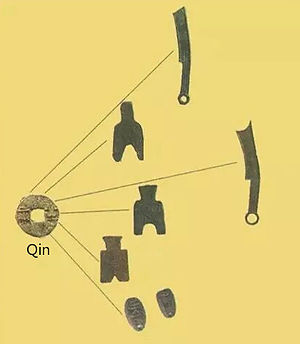
Different Currencies of the Seven Kingdoms
Military Service
-
Every individual in the kingdom bore the obligation to enlist in the army, actively participating in the defense of their land and ensuring the safety of their own families.
-
More rewards, including noble titles, money, and exemption from duty, were given to soldiers with military achievements.
Land System
Shang Yang's reform privatized land, allowing civilians to own and sell their farmland while paying a certain amount of taxes.

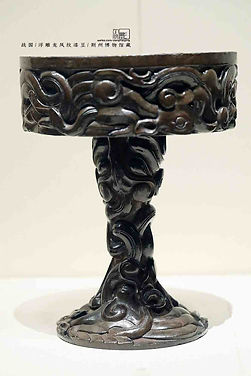

Unearthed Lacquerware, Bronze Food Containers and Colander of the Warring States Period — Hubei, Jingzhou Museum (Photo by Dongmaiying)
Warring States Period Achievements
-
The Publication of Gan Shi Xing Jing.
It is the earliest sidereal table and the world's first astronomical masterpiece, documenting the movement laws of the Sun, Moon, Venus, Jupiter, Mercury, Mars, and Saturn. It also recorded the names of over 800 fixed stars, accurately locating 121 of them.
-
Great philosopher Mohist, and the inventions of Mohism, which include the earliest demonstration of Pinhole Imaging, Specular Imaging principles, etc.
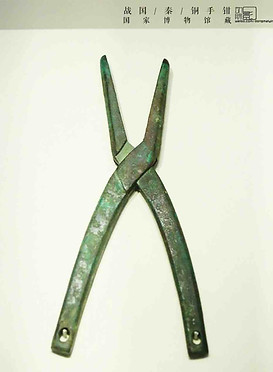
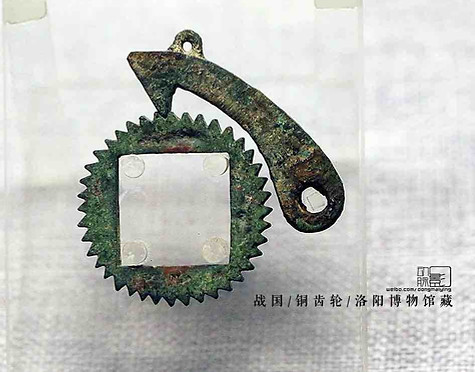
Bronze Pliers and Gear of the Warring States Period (Photo by Dongmaiying)
-
Publication of Huang Di Nei Jing (The Yellow Emperor's Classic of Internal Medicine).
It is the first masterpiece of traditional Chinese medicine theory.
The masterpiece connected the Yin Yang and Five Elements theory to the human body and explained the basic philosophy and cosmology of Chinese Medicine.
Many advanced medical technologies, including anatomy knowledge, were demonstrated too.
-
The invention of the Crossbow.
Unearthed Weapons of the Warring States (Photo by Dongmaiying)
Next: Qin Dynasty (221 BC — 207 BC) — Epoch of Great Unification
Related Articles:
Brief Introduction to Ancient Chinese History
Neolithic Era — Primitive Society and Mythical History
Xia Dynasty (Around 2070 BC — 1600BC) — the First Hereditary Kingdom in China
Shang Dynasty (1600 BC — 1046 BC) — Empire of Bronze Age and Scripts on Oracle Bones
Zhou Dynasty (1046 BC — 256 BC) — Decency, Hierarchy, and the Feudalism System
Spring and Autumn Period (770 BC — 403 BC) — Great Philosophers and Contention of Warlords
Han Dynasty (202 BC — 220 AD) — Golden Era of Legendary Civilians
Three Kingdoms, Jin, North & South Dynasties (220 — 589) — Wars and Conspiracy in Turbulent Times
Sui Dynasty (581 — 618) — Transient Age and the Inaugurator of Prosperity
Tang Dynasty (618 — 907) — Flourishing Golden Age
Five Dynasties and Ten Kingdoms (907 — 979) — Decades of Wars and Chaos
Song Dynasty (960 — 1279) — Wealthy Empire with Tragic Encounters
Yuan Dynasty (1271 — 1368) — Half Anarchism
Ming Dynasty (1368 — 1644) — Epoch of All Round Prosperity
Qing Dynasty (1636 — 1912) — Extreme Centralization and Closure
Famous Historical Figures in Ancient China




